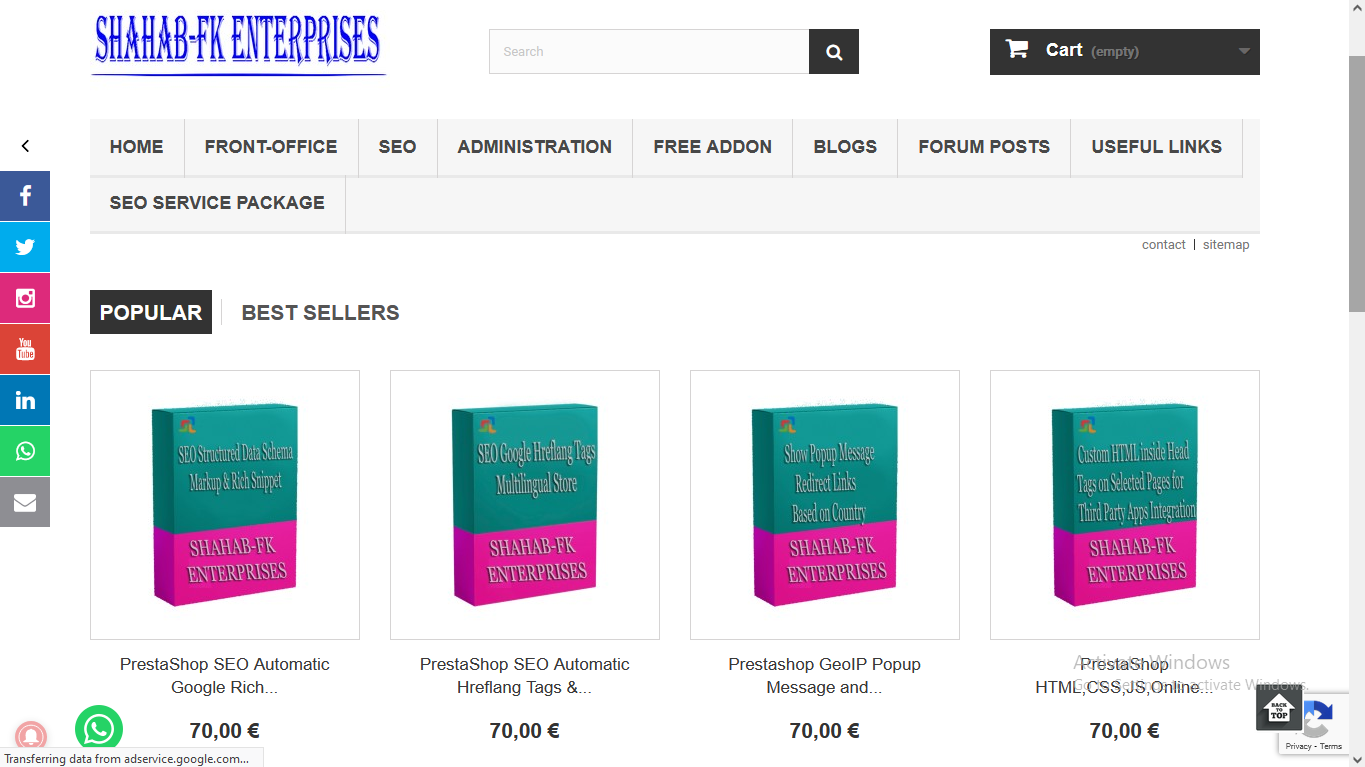Improving speed and performance in PrestaShop is one of the most effective ways to boost user experience, SEO, and conversion rates. 🚀
Here’s a practical checklist you can follow:
🔧 1. Enable Built-in PrestaShop Performance Features
- CCC (Combine, Compress, Cache)
Go to Advanced Parameters → Performance and enable:- Combine, Minify & Cache CSS/JS
- Smart Cache for CSS
- Smart Cache for JavaScript
- Apache Optimization (if using Apache)
- Disable non-used features
- Turn off unused modules
- Disable stats you don’t use
- Limit “front-office” modules running on every page
💾 2. Optimize Caching
- Enable PrestaShop cache system in Performance settings.
- Use server-side cache like:
- Varnish Cache (works well with Nginx/Apache)
- OPcache for PHP
- Memcached or Redis for object caching
🖼️ 3. Image Optimization
- Use WebP format for images (smaller size, faster load).
- Install an image optimization module (like Imagify or TinyPNG integration).
- Regenerate thumbnails to correct sizes (avoid oversized images).
- Use lazy loading so images load only when visible.
🌍 4. Use a CDN (Content Delivery Network)
- Cloudflare, BunnyCDN, or Fastly can deliver static assets (CSS, JS, images) from servers closer to your visitors.
- This reduces latency and speeds up global access.
⚡ 5. Optimize Database
- Regularly clean logs, abandoned carts, and old stats in Advanced Parameters → Database → Clean Up.
- Use database optimization tools (phpMyAdmin → optimize tables).
- Limit the number of products loaded on pages (pagination).
🛠️ 6. Improve Hosting & Server Setup
- Use PHP 8.1 or higher (faster than older versions).
- Upgrade hosting to VPS or dedicated server if you’re on shared hosting.
- Configure server with Nginx + PHP-FPM (faster than Apache).
- Enable HTTP/2 or HTTP/3 (if server supports it).
📦 7. Minimize Modules & Theme Issues
- Remove unused/unnecessary modules (each one adds queries & scripts).
- Choose a lightweight, optimized theme (avoid bloated multipurpose themes).
- Audit front-end requests using Chrome DevTools → Network to find slow scripts.
📊 8. Monitor & Test Performance
- Use tools like:
- Google PageSpeed Insights
- GTmetrix
- WebPageTest.org
- These help find render-blocking scripts, large images, and poor caching setups.
✅ Pro Tip: Many PrestaShop merchants saw the biggest speed boost by switching to a better hosting provider + enabling Varnish/Redis caching + using WebP images with lazy loading.

